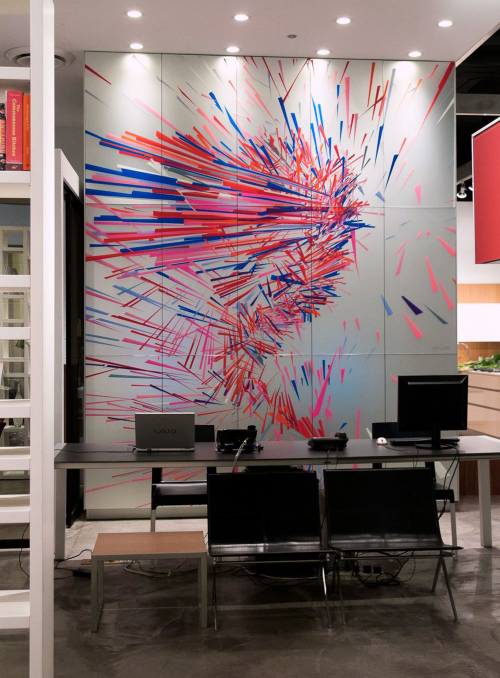
Valcucine makes a case for the artisan in the kitchen. Milan 2013.
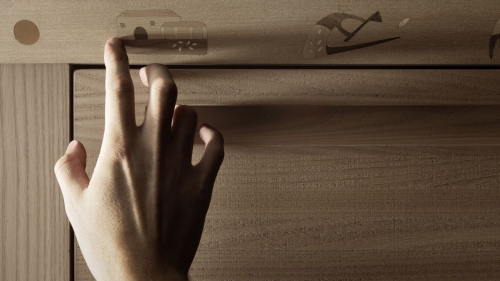 >click > enlarge
>click > enlarge
The artisan appears in 1993 when the ‘Fabula‘ model was launched, the first kitchen with colored wood and doors inlaid with pictograms. For the designer Gabriele Centazzo, it represented the Mediterranean dream. In 2009 Valcucine presented ‘Invitrum‘, the first 100% recyclable base unit in glass and aluminum. In 2013, both art and tech reappear together as Valcucine’s Milan showroom creatively presents their master craftsmen who set up real workshops showing how they create inlays, mosaics and carvings. We also see the reappearance of Centazzo designing SineTempore (without time), a kitchen conceived to express the values of tradition through the recovery of various ancient handicraft techniques.

With Invitrum, the production process of recycled aluminium has the advantage of consuming only one-twentieth of the energy needed to obtain primary aluminium. Traditional kitchens usually supply base units that are installed side-by-side which means that the chipboard side panel is doubled; Valcucine’s structure has simply a single carcass side in glass. The new glass system is designed to be easily disassembled using only mechanical joints instead of glues.

In the showroom product technicians shared the tests, here Diego Skerlic, a quality official, uses an eyedropper of various stain producing ingredients such as coffee and red wine, as he helps develop fully resistant long-lasting materials.
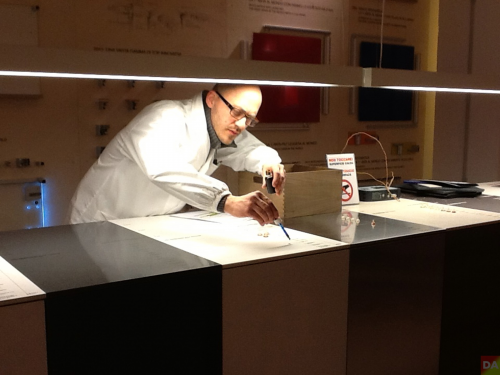
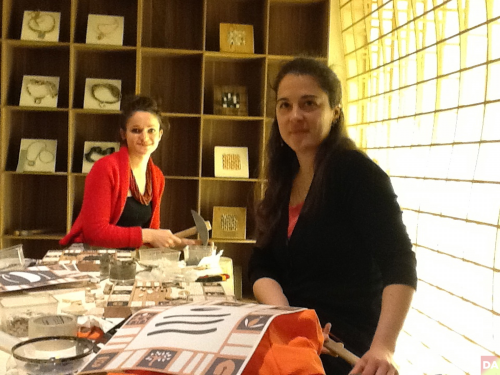
Laura Carraro and Lisa Battistutta were introduced to Valcucine as mosaic art students and the two continue to collaborate and create for them.
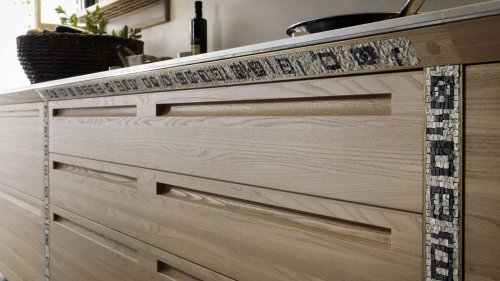
above and below, kitchen program SineTemporare | 2013
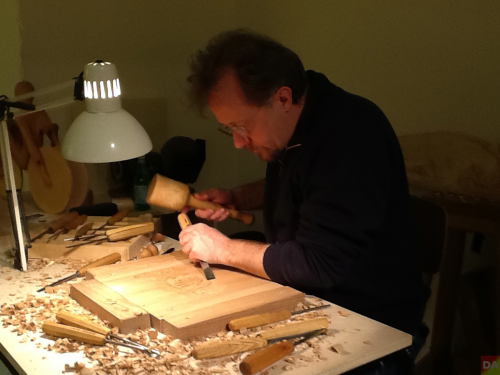
Wood sculpture Padovan Giovanni carves away.
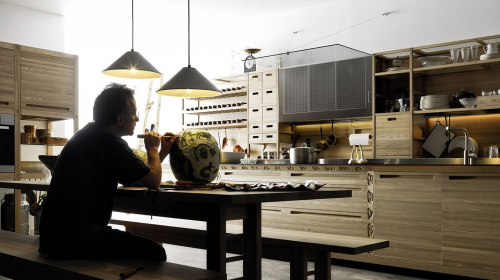
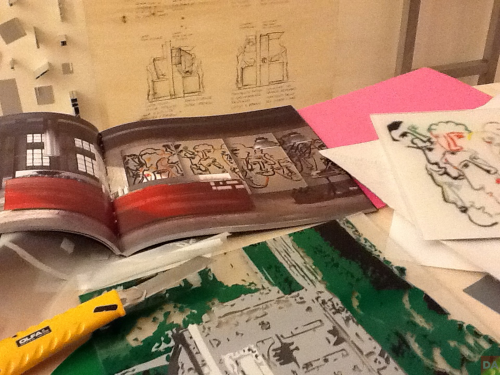
Most recently, after three years of research, Valcucine has developed a technique to make inlaid art on glass. The highly technological process is rooted in handmade craft and makes it possible to personalize a kitchen with ideas offered by artists, architects and designer or even by the home owner.
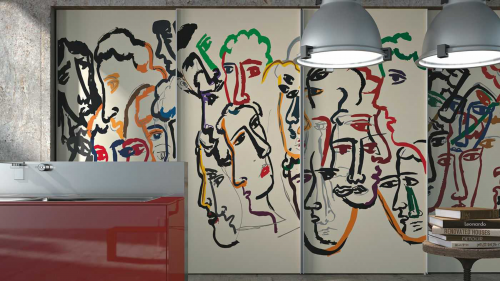 artematica vitrum arte programme
artematica vitrum arte programme
And even more recently Chicago graphic designer Rick Valicenti and John Pobojewski of (thirst) alerts us to the very same process used for the Valcucine Chicago showroom for NeoCon 2013. The installation of The Elizabeth Project (formally named E) consist of ribbons of colored vinyl cut by hand and infused in glass. ‘Elizabeth’ is the daughter of Chicago architect Gordon Gill: the collaboration done in 2009 when Elizabeth was nine. thirst used motion capture technology and custom software to sample Elizabeth’s energy as she danced in place. [ details ]
[ valcucine ]



